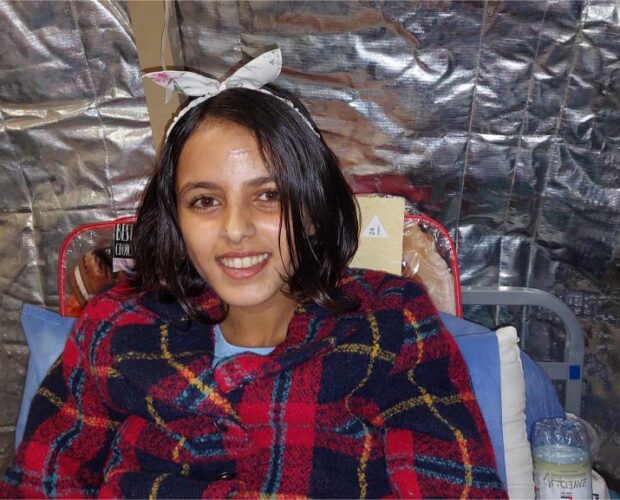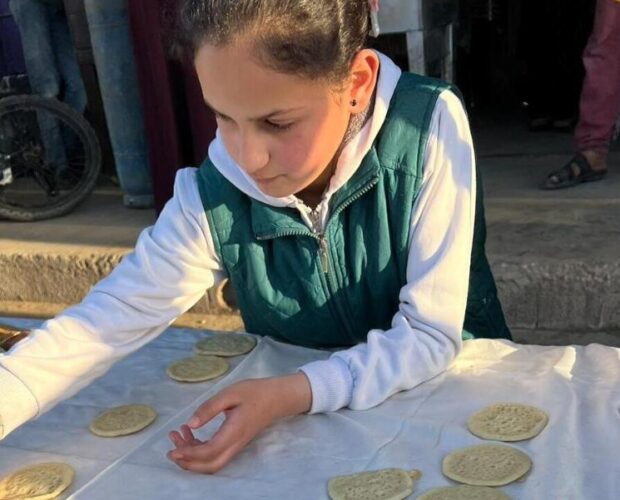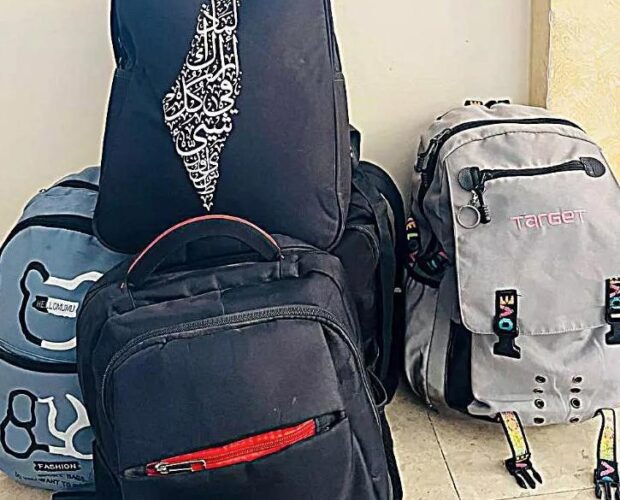
In a small patch of land barricaded in four directions, Gazan youth grow up in the grim reality that they are trapped and face violence or the threat of violence every day. Despite this, Gazan youth have dreams and work hard to make them a reality. They are determined to make their voices heard and create positive changes in their communities. They are creative and take advantage of their limited resources.
Yasser Ustath, a 21-year old Palestinian refugee living in northern Gaza, is a man determined to fulfil his dreams. He wants to help people who lost their hands during Israeli air attacks on Gaza. “In my early years, I heard a lot of heartbreaking stories about people who suffered from amputations and couldn’t afford the heavy costs of artificial limbs,” Yasser recounts. His goal is to make hand prostheses for those who need them.
Yasser’s parents have been the main source of his motivation, encouraging him to work as hard as he can to achieve his goals. They were the first to believe in their son’s dreams. When he was a child, Yasser realised that education was the key to overcoming the challenges he and his community face because of Israel’s illegal blockade on Gaza. Yasser promised himself at a young age that he would never lose sight of his dreams.
“My journey began when I joined the United Nations Relief and Works Agency (UNRWA) school north of Gaza,” Yasser said. UNRWA schools are designed to support the human development of Palestinian refugees. His school has highly-profiled teachers who deliver strong pedagogical curriculums, including interactive learning that boosted Yasser’s cognitive and interpersonal skills. They created a supportive environment that encouraged Yasser’s innovation and helped him on the path to reaching his full potential. He adds, “I loved and found my passion in technology classes. I applied myself to learning every theoretical lesson my teacher gave me.”

His teacher supported and admired Yasser’s dedication, ingenuity, and eagerness. Yasser found his own parts and tools to use in his school experiments. His teacher validated their usefulness and helped him figure out how to use them to complete his project. When he was in eighth grade, Yasser successfully made an electronic crane. The school manager was surprised and delighted and asked Yasser to showcase his achievement to inspire his colleagues.
There is no doubt that Yasser made sacrifices, experienced ups and downs, and conducted time-consuming experiments to achieve his success. However, what mattered most was his consistency and perseverance. For Yasser, success is the sum of his hard work repeated day in and day out. He spent his break times in the school’s technology lab and used his own money to reach his aim.
Yasser graduated from high school with distinction and enrolled in the Gaza Training Centre (GTC), the college that specialises in science and technology. After enrolling, he found the major that would enable him to accomplish his goals: Mechatronics. Mechatronics is a multidisciplinary field that teaches the skill sets needed in the contemporary, advanced, and automated manufacturing industry. GTC endeavours to make its graduates competitive and distinctive in international and local markets. While overcoming hardships in a heart-breaking reality, Yasser graduated and his project has become the first of its kind to emerge in blockaded Gaza.
Yasser established the “Hope Hand” project to make prostheses for those who aren’t allowed to travel outside Gaza, whose financial resources are limited, and who can’t afford the heavy costs of hospitals. Thanks to the scientific background and expertise he acquired from GTC, Yasser started working on his project.
The first step was designing a limb containing the sensors that are responsible for identifying muscle signals, transferring those signals to a pre-programmed controller and then sending the output control signals to five specialised small motors fixed on each finger. It was impossible for Yasser to get the parts and tools he needed because the Israeli blockade prohibits the importation of such materials. That is why Yasser had to invent alternatives. “I created alternative sensors to simulate the sensors needed for functionality, using gloves and potentiometer sensors. They worked fine in the first stage of the project but not at the required level,” says Yasser.
Prostheses are mainly developed on 3D printers that produce the final form of the hand. There are no 3D printers in Gaza, even though Yasser had all the 3D design files needed for printing. That is why Yasser decided to create them himself using available and simple tools, such as hot glue sticks, fizzy drink cans, and juice straws to get the final finger shape. Yasser exclaimed with a smile, “I succeeded in making the prototype that works with muscle sensors and brain signal sensors to move the hand and its fingers elastically.”
Having successfully produced the prototype, Yasser’s next step is to develop a production process.
Yasser’s story illustrates the drive and ability of Palestinian youth to pursue their dreams, despite the obstacles. They stay focused on the important results that they hope to achieve, and not on the hardships they face. Nothing can prevent them from living their dreams.
This story was co-published with Palestine Deep Dive.









